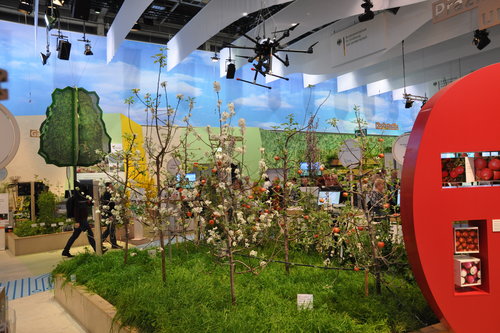The International Green Week (IGW) in Berlin a one-of-a-kind international exhibition of the food, agriculture and gardening industries. IGW is the origin of the Global Forum for Food and Agriculture (GFFA). This is where over 70 international ministries and food producers meet – their displays reveal the fascinating world of the food and beverage industries. Even though traditions are maintained since the start in 1926, innovations are created in order to ensure continuity. Renewable resources, organic agriculture, gardening and the future of rural development continue to gain importance at International Green Week. On the same note, the 74 Ministers of Agriculture agreed to invest in digitalisation during their assembly.
In this light, various applications of the Internet of Things in the agri-food sector were demonstrated during the IGW. One intriguing project that was shown was PRIMEFRUIT, started by the Leibniz-Institut für AgrarTechnik und BioÖkonomie in Potsdam.
Aim of PRIMEFRUIT
The project aims to develop plant-physiological approach-based models of growth capacity and efficiency, for determining the yield capacity for fruit growing sites in the German state of Brandenburg. The fruit sizes reached in commercial orchards in Brandenburg are often not sufficient enough to meet trade standards, therefore not fully exploiting market potential. For this purpose, spatially resolved data on the growth capacity are collected with laser scanners, at different fruit production sites. The data is evaluated by georeferencing, enabling the determination of average yield and defining a target for optimal fruit density. This also enables to derive recommendations for thinning intensity of the blossom.
Methods used
The tree-specific yield capacity is determined by means of gas exchange measurement and by the leaf area with aforementioned laser scanner. On this basis the carbon consumption of the plant organs is modelled relative to the tree-specific assimilation performance serves as the data basis for calculating the optimum fruit load as a target value for flower thinning.
3D camera’s determine how many flowers a fruit tree carries. This gives very important information, as too many flowers will lead to the production of lower-quality fruit, and in the following year even less fruits are produced. The camera and software count how many flowers blossom, while driving through the yard. The data that is collected is linked to the thinning machine by the SmartArt app, allowing the farmer to thin exactly the right number and location of flowers.
Research for practice – together with practice
The close cooperation within the framework of the project between research partners Leibniz-Institut für AgrarTechnik und BioÖkonomie and Brandenburg fruit growers aims at practicable and rapid implementation of this innovative approach to realise the production of high-quality fruits.